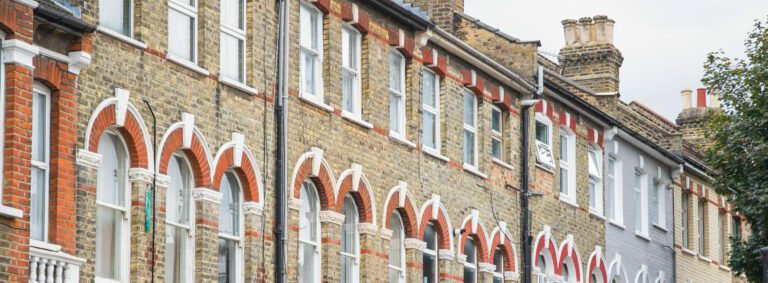Housing market outlook
According to Savills, housing market performance for the rest of the year is dependent on the Autumn Budget, with many speculating that the Chancellor will announce changes to Stamp Duty and Capital Gains Tax.
This uncertainty may slow down market activity up to 26 November, as buyers and sellers wait to see what Rachel Reeves has in store. Sensible pricing will therefore be essential for those looking to secure a sale over the coming months.
Moneyfacts reported in mid-August that the average five-year fixed rate mortgage fell below 5% for the first time since May 2023. However, the yield on 30-year UK government bonds hit a 27-year high in September, bringing concerns that mortgage rates will go up again.
Meanwhile, rental growth was 2.4% in August according to Zoopla, the lowest annual rate in four years and less than half that recorded in August 2024.
15% of property sales fall through
It’s not been the easiest year for sellers, with one in seven property sales falling through between January and July 2025.
According to property data analysts Outra, it took an average of 35 days for a sale to fall through after going under offer. The South East was the UK region with the highest number of fall-throughs (17.07%), followed by the South West (16.83%). Scotland had the fewest (8.14%), but this is reflective of lower market activity in the area.
The property type with the highest fall-through rate was converted homes (17.35%), followed by end-of-terrace houses (16.03%).
Simon Dawson at Outra commented, “There’s a limit to what you can do to prevent your sale falling through – when you’re dealing with a buyer, some things are out of your control. By understanding market trends and buyer behaviour, you can make better-informed decisions, reduce risk and increase certainty in the selling process.”
Buyer hotspots in London
Rightmove has identified the most in-demand areas amongst homebuyers in London.
A map highlighting the most desirable areas in the capital has caused a stir online – shaped like a banana, the curve runs from South West to North East London. However, Rightmove’s research has shown that eight out of the ten buyer hotspots are not actually inside this area. Docklands and Hackney are the most in demand, both outside of the banana zone. Islington and Battersea were the only neighbourhoods that fell within the curve.
Property expert at Rightmove, Colleen Babcock commented, “Affordability is a key driver, with many of the most in-demand locations offering better value than the London average. It’s a reminder that buyer interest doesn’t always follow the trend, it follows the opportunity.”
House prices headline statistics
| House Price Index – (July 2025) | 103.4 |
| Average House Price | £270,000 |
| Monthly Change | 0.3% |
| Annual Change | 2.8% |
*(Jan 2023 = 100)
-
- Average house prices in the UK increased by 2.8% in the year to July 2025
- House prices increased by 0.3% on average between June and July 2025
- The average house price in London was £561,587.
House prices – Prices change by region
| Region | Monthly change (%) | Annual change (%) | Average price (£) |
| England | 0.3 | 2.7 | £291,852 |
| Northern Ireland | 0.3 | 5.5 | £185,108 |
| Scotland | 0.5 | 3.3 | £192,050 |
| Wales | -0.4 | 2.0 | £209,178 |
| East Midlands | 0.4 | 2.8 | £239,830 |
| East of England | -0.1 | 2.1 | £337,650 |
| London | 0.0 | 0.7 | £561,587 |
| North East | 0.0 | 7.9 | £163,684 |
| North West | 0.4 | 4.8 | £213,266 |
| South East | -0.4 | 1.2 | £381,764 |
| South West | 1.4 | 1.4 | £306,148 |
| West Midlands Region | 0.3 | 3.3 | £247,763 |
| Yorkshire and The Humber | 0.7 | 3.9 | £205,656 |
Source: The Land Registry
Release date: 17/09/25
Next data release: 22/10/25
Average monthly price by property type
– July 2025
| Property Type | Annual Increase | |
| Detached | £440,309 | 3.6% |
| Semi-detached | £272,456 | 3.6% |
| Terraced | £226,794 | 2.8% |
| Flat / maisonette | £197,037 | 0.7% |
Source: The Land Registry
Release date: 17/09/25
Housing market outlook
“Affordability remains a challenge, but there are signs of improvement. Interest rates have been on a gradual downward path for nearly two years, and many of the most competitive fixed-rate mortgage deals now offer rates below 4%.
Combined with strong wage growth – which has outpaced house price inflation for nearly three years – this is giving more prospective buyers the confidence to take the next step. Summer is typically a quieter period for the market, so the recent rise in mortgage approvals to a six-month high is an encouraging sign of underlying demand.
While the wider economic picture remains uncertain, the housing market has shown over recent years that it can take these challenges in its stride. Supported by improving affordability and resilient demand, we expect to see a slow but steady climb in property prices through the rest of this year.”
Amanda Bryden, Head of Mortgages, Halifax
Source: Halifax, September 2025
Contains HM Land Registry data © Crown copyright and database right. This data is licensed under the Open Government Licence v3.0.
Written and supplied by The Outsourced Marketing Department. All details are correct at the time of writing (17 September 2025)


